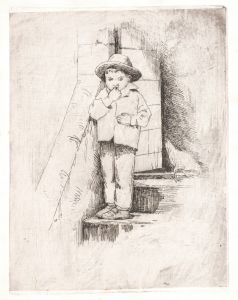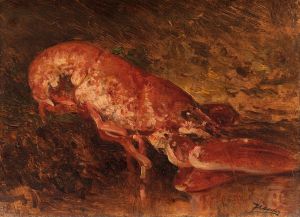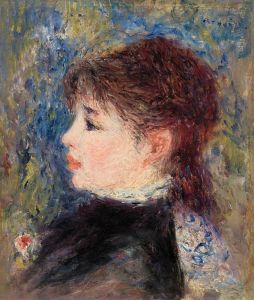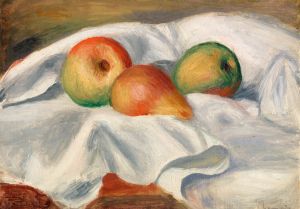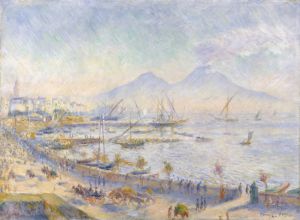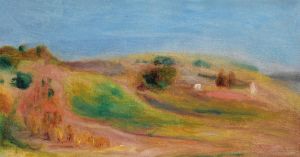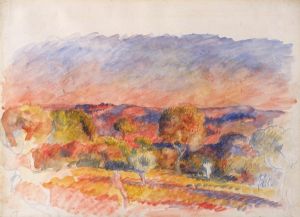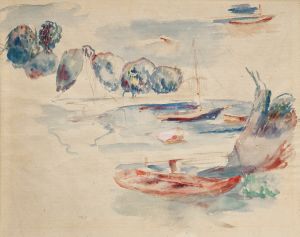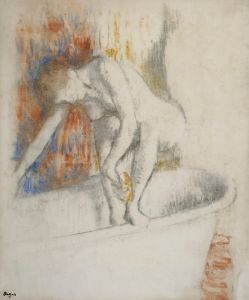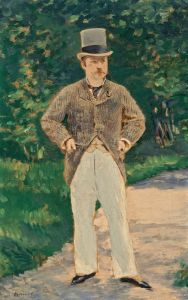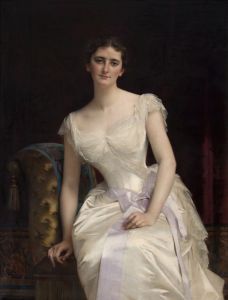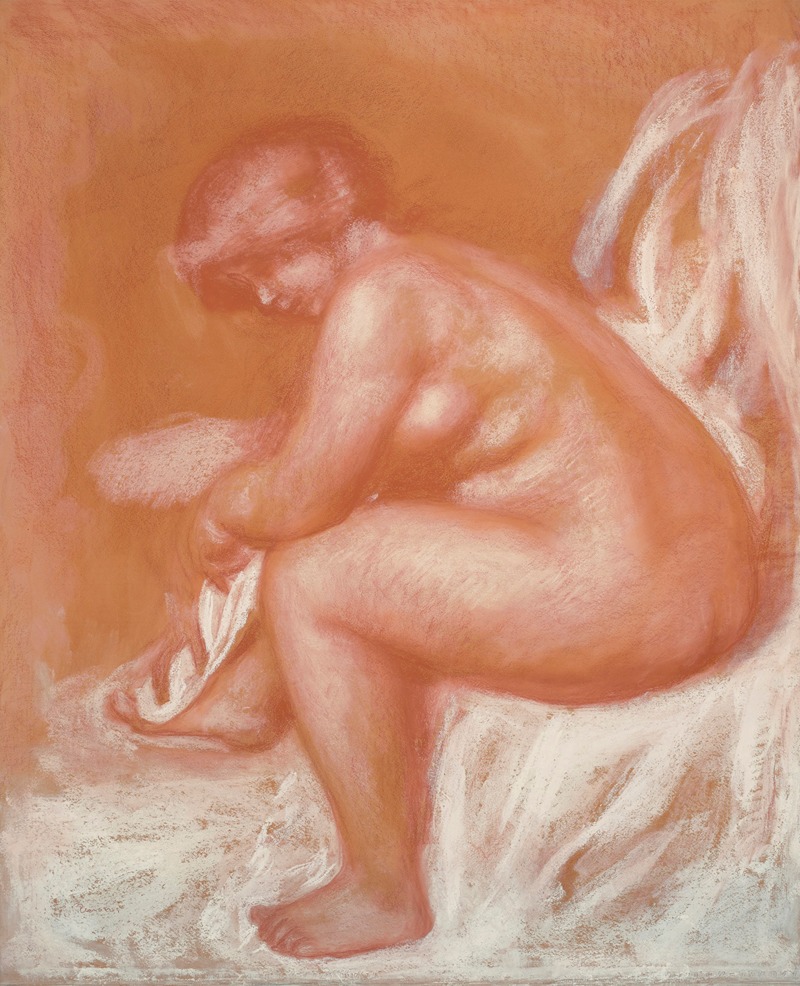
La toilette ou Femme nue s’essuyant
A hand-painted replica of Pierre-Auguste Renoir’s masterpiece La toilette ou Femme nue s’essuyant, meticulously crafted by professional artists to capture the true essence of the original. Each piece is created with museum-quality canvas and rare mineral pigments, carefully painted by experienced artists with delicate brushstrokes and rich, layered colors to perfectly recreate the texture of the original artwork. Unlike machine-printed reproductions, this hand-painted version brings the painting to life, infused with the artist’s emotions and skill in every stroke. Whether for personal collection or home decoration, it instantly elevates the artistic atmosphere of any space.
Pierre-Auguste Renoir's "La toilette ou Femme nue s’essuyant" is a notable work by the renowned French Impressionist painter, created in the late 19th century. Renoir, born in 1841, was a leading figure in the Impressionist movement, which sought to capture the effects of light and color in a more spontaneous and naturalistic manner than traditional academic painting.
This particular painting, "La toilette ou Femme nue s’essuyant," translates to "The Toilet or Nude Woman Wiping Herself," and it exemplifies Renoir's fascination with the female form and his mastery of depicting the human body with a sense of intimacy and warmth. The painting features a nude woman engaged in the private act of drying herself, a subject that Renoir approached with sensitivity and a keen eye for the subtleties of light and shadow on skin.
Renoir's technique in this painting is characteristic of his Impressionist style, with loose brushwork and a vibrant palette that captures the play of light on the woman's body. The background is typically soft and blurred, directing the viewer's focus to the figure, which is rendered with a sense of volume and presence. The use of color is particularly noteworthy; Renoir employs a range of warm tones to create a lifelike representation of flesh, while cooler hues in the background provide contrast and depth.
The painting reflects Renoir's interest in themes of beauty and sensuality, common in his oeuvre. His approach to the nude was often more about celebrating the beauty of the human form rather than making any overtly provocative statement. This work, like many of his others, is imbued with a sense of grace and tranquility, inviting the viewer to appreciate the simple, yet profound, act of personal care.
Renoir's depiction of women has been both celebrated and critiqued over the years. While some view his work as a celebration of feminine beauty, others have critiqued it for its idealization and objectification. Nonetheless, Renoir's ability to capture the softness and warmth of human skin, and his focus on the intimate moments of everyday life, have made his works enduringly popular.
"La toilette ou Femme nue s’essuyant" is part of a broader tradition within art history of depicting the nude, a genre that has been explored by countless artists over the centuries. Renoir's contribution to this tradition is marked by his unique Impressionist touch, which emphasizes the fleeting effects of light and the immediacy of the moment.
The painting is housed in a private collection, which means it is not as accessible to the public as some of Renoir's other works that reside in major museums. However, it continues to be studied and appreciated by art historians and enthusiasts who are interested in Renoir's approach to the human figure and his role in the development of modern art.
Overall, "La toilette ou Femme nue s’essuyant" is a testament to Renoir's skill as a painter and his ability to convey the beauty and intimacy of everyday moments through his art.





